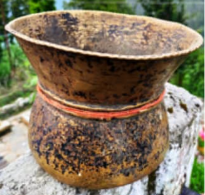In this article, we will discuss Conventional Methods of Measurement. We will know about some Conventional measuring instruments and their importance. After learning this we will how our modern instruments are developed and what is their history.
The purpose of this article is to aware of the Conventional Methods of Measurement. You will also find many other important information that you might need to know. If you do not have time to read all of the information, then I would suggest reading the introduction section first.
Introduction
Measurement plays a vital role in our daily life. For example, making a cup of tea is need measurement of sugar, tea, milk, and heat. If the proper measurement is not used our task will not succeed. Now the question arises how do we know we use 2 spoons of sugar to make three cups of tea? The answer is standardization. We standardized some specific units and measurement techniques by the hit and trial method. Today, we measure volume, mass, length, and time using a common unit. However, have you ever thought about how these measurements were made prior to the introduction of such units? Here you will find the answer to this question.
Time measurement
Time measurement was measured using the shadow of the sun and moon. This was the conventional method used almost everywhere in the world. Some other techniques of time measurement are the following.
Water Clock
Based on the rate at which water dripped from a tank, time was measured. Because it is challenging to manage the flow of water, this technology was not thought to be trustworthy. Clepsydra was the name given to the gadget.
Hourglass
A tool used to gauge the passage of time is an hourglass, also known as a sandglass, sand timer, sand clock, or egg timer. It comprises two glass bulbs joined vertically by a small neck that permits a controlled flow of an object typically sand from the upper bulb to the bottom. For the hourglass to measure the same duration regardless of direction, the upper and lower bulbs generally are symmetric. The number and size of the particulate matter, the bulb size, and the neck width are some of the variables that affect the precise amount of time that an hourglass measures.

Fig-1
Length measurement
Different units of the length which are used today are measured conventionally as follows.
Inch
Measurement of the inch unit in that time was not that easy at that time. So our forefathers used a human thumb measured as one inch. It was used to measure the length of small objects, such as the seam of a cloth or the length of a piece of paper.
Foot
To measure the foot our forefathers use a human body with a height of 160 cm. They defined the foot as 15.3% of the height of the human body. Romans and Greeks liked using this unit, which was mostly used to determine things like how big a piece of cloth was, how tall people and animals were, how big a building was, etc.
Yard
Based on human paces, the yard is defined as a unit of measurement for distance. A yard is equal to two cubits, which is three feet, or roughly 36 inches. By using the binary approach, the early yard was divided into 2, 4, 8, and 16 pieces known as the half-yard, span, finger, and nail Miles.

Fig -2
Weight measurement
Weight measurement is done with different methods in different parts of India as well as the world. Some important methods of weight measurement in a conventional way are the following
- A metal of some weight was kept inside the temple or some social place and copies of it were given out to the locals. This is treated as a standard weight for that society.

Fig- 3
- Due to their roughly regular size, wheat grains were employed to measure weight. Some jewelers still use this standard, which was determined to be the number of wheat grains. The weight of one grain is 64.79891 milligrams.
- In some hill states of north India a tool to measure weight is a “Patha” or “Pathu”, a traditional container used as a tool for measurement. Different weight measurement was used for Grains, Oil, Ghee, and Milk. Even now, you can still find this equipment being used in various places for measurements. Usually composed of brass, iron, copper, wood, or bamboo, these are intricately carved with decorations to make them appear lovely.. 1 “Pathu” is equal to 3 kg.
Recommended Articles:
Charging by Induction: Introduction, Derivation, Examples, And Applications
Continuous Charge Distribution: Density, Type, Importance, And Comparison
Controlled Thermonuclear Fusion
Convection Currents: Introduction, Definition, Working, Atmospheric And Atmospheric
Conventional And Non-conventional Sources Of Energy
The Egyptian cubit, the Indus Valley units of length referred to above and the Mesopotamian cubit was used in the 3rd millennium BC and are the earliest known units used by ancient peoples to measure length. According to the national physics laboratory (NPL), ‘since 1983, the meter has been internationally defined as the length of the path traveled by light in vacuum during a time interval of 1/299792458 of a second’. This definition can be realized simply and accurately using modern techniques and the speed of light is regarded to be a universal constant, making it ideal as the basis for a length standard. Measurement is the process of comparison of the given physical quantity with the known standard quantity of the same nature. A unit is the quantity of a constant magnitude that is used to measure the magnitudes of other quantities of the same nature. Standardization is the process of implementing and developing technical standards based on the consensus of different parties that include firms, users, interest groups, standards organizations, and governments. Conventional Methods Measurements FAQs
What is the earliest known measurement system?
Define 1 meter in brief.
What is the requirement of measurement?
Explain Standardization in measurement. Why is it useful?